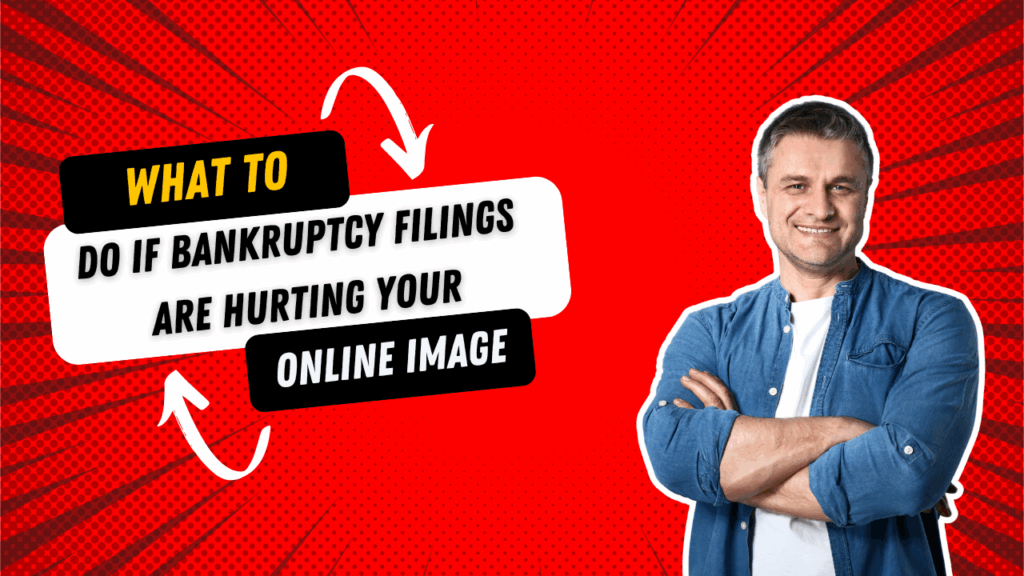Why Bankruptcy Records Are Public in the First Place
When someone files for bankruptcy in the U.S., it’s a matter of public record. That means your name, case number, filing type, and sometimes even assets or creditors are available for anyone to find. This is by design. The U.S. bankruptcy system is transparent by law. But that doesn’t mean it’s fair in the age of search engines.
Websites like PACER and third-party aggregators pick up these filings and keep them indexed. Some of them even optimize the content for search traffic. Others sell subscriptions or charge fees for access. If your bankruptcy shows up when someone Googles your name, it’s not a fluke. It’s intentional.
Dig Deeper: How to Remove Court Records from Google Search
How Bankruptcy Can Damage Your Online Reputation
For many people, bankruptcy is already the result of a tough season—job loss, divorce, medical bills, or failed business ventures. Having it plastered online can feel like a second hit.
Landlords, employers, clients, even dates, often run a quick search before making decisions. If your bankruptcy filing is front and center, it can raise red flags or even stop you from getting hired, approved, or trusted.
And the kicker? Even if your case was resolved years ago, the records may still show up. Some stay online for 7 to 10 years, or even longer on background report websites that don’t clean their data.
Step 1: Find Out Where It’s Showing Up
Before you can clean up your image, you need to know where the damage is happening. Google your name in quotes. Try adding the word “bankruptcy” or your state. Use private mode so results aren’t personalized.
Check these types of sites:
- Court record aggregators
- Public notice archives
- Background check websites
- News outlets that publish bankruptcy lists
Once you know where your information lives, you can decide which tactic to use.
Step 2: Request Removal from Third-Party Sites
Some websites will remove your bankruptcy listing if you ask. Others won’t. Start with the easy ones.
Look for a “contact” or “opt-out” link. If it’s a background check site, they usually have a formal opt-out process. Follow their steps exactly. Include proof of identity and URLs.
Pro tip: Take screenshots of everything you submit, including confirmation messages. Some sites remove listings but then republish them later. Track your progress.
Step 3: Push the Results Down in Search
If the site refuses to take it down, you can try suppression. This means flooding Google with positive or neutral content about you so the bankruptcy page gets buried.
Here’s what to create:
- A personal website with your name in the domain
- Updated LinkedIn profile
- Blog posts or guest posts
- Press mentions (local news, industry sites)
- Medium or Substack articles
The more content you control, the better chance you have of pushing down bad results. You want to own page one of Google for your name.
Some people use a reputation management service when they don’t have time to do this manually.
Step 4: Try Removing It From Google Directly
Google sometimes removes content from search results if it contains outdated or harmful information. You can submit a request through the Google removal request tool.
In your request, explain how the bankruptcy is outdated, resolved, or misleading. Include direct links to the pages and screenshots if needed. Note that Google usually does not remove government records, but they might remove scraped content if it violates their policies.
Step 5: Check Background Check Companies
Even after you’ve removed the public listings, your bankruptcy may still show up on screening reports. According to the Consumer Financial Protection Bureau, many background check firms rely on old or incorrect data.
You have rights under the Fair Credit Reporting Act (FCRA). You can:
- Request a free report from background check firms
- Dispute any errors or outdated items
- Demand they update or remove it
This is especially important if you’re applying for jobs or housing. Mistakes can cost you opportunities.
Real People, Real Frustration
“I filed for Chapter 7 during the pandemic when my small business tanked,” said Trevor, a former gym owner in Ohio. “Three years later, I’m getting rejected for commercial leases because my name still shows up on these weird court sites.”
Trevor ended up hiring an online reputation firm to clean up his results. Within six months, his bankruptcy page was pushed off page one. “I wish I had done it sooner,” he said.
How Long Will It Take?
It depends on the method. Some opt-out forms take a few days. Suppression can take weeks or months. Google removals are unpredictable. Most people see results within 30 to 90 days if they’re consistent.
Removing content from background check sites may take longer, especially if you’re filing disputes. But it’s worth the effort.
Final Thoughts
Bankruptcy is hard enough. You shouldn’t have to carry it around on the internet for years. With the right tools, persistence, and strategy, you can take control of how you appear online.
Focus on building new content, tracking old listings, and asserting your rights under FCRA and privacy laws. If needed, ask for help from professionals who do this every day.
The internet remembers everything, but that doesn’t mean it gets the last word.
Need help? Top Shelf Reputation specializes in managing court records online, even when they can’t be fully removed. Contact us today to take back control of your online image.

